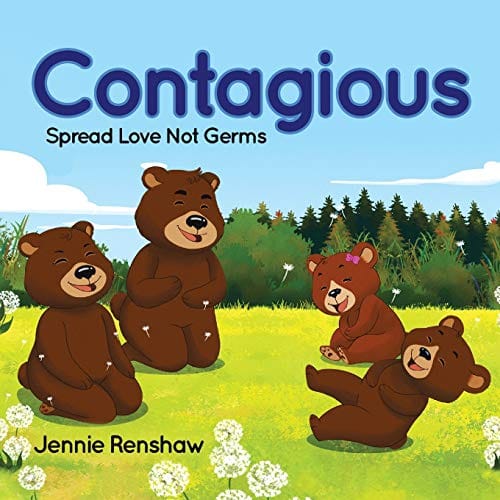Contagious: How Ideas, Products, and Messages Spread Like Wildfire
Discover how ideas, products, and messages become contagious and learn practical strategies to make your brand’s content spread like wildfire.

Introduction: What Does It Mean to Be Contagious?
In everyday language, “contagious” usually describes how a cold or the flu jumps from person to person. In marketing and cultural conversations, the word has taken on a new life, referring to any idea, product, or piece of content that seems to spread effortlessly through social networks, online communities, and real-world word of mouth. Understanding why some things catch on while others languish in obscurity is more than a curiosity—it is a road map for entrepreneurs, creators, and organizations that need organic traction in an overcrowded marketplace.
The concept was popularized by Wharton professor Jonah Berger in his best-selling book "Contagious: Why Things Catch On." Berger distilled years of research into a practical framework that explains how social transmission really works. This article unpacks that framework, offers vivid examples, and closes with actionable tips you can apply today to make your own brand or campaign truly contagious.
The Six Principles of Contagious Content
1. Social Currency
People love to share things that make them look smart, in-the-know, or ahead of the curve. When your offering serves as “social currency,” it boosts the sharer’s status, making them more likely to pass it along. Think of how exclusive speakeasy-style bars attract lines around the block, not simply for the drinks but for the bragging rights.
2. Triggers
A trigger is a stimulus that cues people to think about your product or idea. Peanut butter automatically brings jelly to mind; Tuesday reminds millions of internet users of “Taco Tuesday.” By linking your message to frequent, ordinary cues, you dramatically increase the chances that it will be brought up in daily conversation.
3. Emotion
Content that makes us feel something—especially awe, excitement, or even anger—is more likely to be shared. Emotional arousal drives people to take action. The key is to tap into high-arousal emotions rather than low-arousal ones like contentment or sadness. A campaign that sparks outrage over a social injustice, for example, will travel farther than one that simply informs.
4. Public
The more observable a behavior or product is, the more likely it is to be imitated. Apple’s glowing laptop logo and Nike’s swoosh-laden workout gear both turn users into walking billboards. By designing products and experiences that advertise themselves in public spaces, you build built-in marketing leverage.
5. Practical Value
People naturally want to help others, and sharing useful information is one of the easiest ways to do that. Whether it’s a hack to save money on groceries or a tutorial that cuts learning time in half, practical value creates immediate benefits for the receiver and reputational points for the sender.
6. Stories
Humans think in narratives. Wrapping your message in a compelling story provides a vessel that people are eager to pass along. The Trojan Horse was memorable precisely because it was a story first and a military tactic second. When your core idea is embedded in a narrative, it hitches a ride wherever that story travels.
Real-World Examples of Contagious Ideas
The ALS Ice Bucket Challenge is a textbook example of all six principles in action. Participants gained social currency by proving they were charitable and fun, the videos triggered more challenges, the cold shock generated strong emotion, and the public nature of dumping ice on one’s head ensured visibility. The simple act of nominating friends extended the story and added practical value by raising funds for ALS research.
Another case study is Blendtec’s “Will It Blend?” YouTube series. By pulverizing iPhones, golf balls, and even marbles, Blendtec created jaw-dropping emotional content that showcased the blender’s power (practical value) while providing endless social currency for viewers who shared the outrageous clips.
How to Make Your Own Brand Contagious
Identify and Amplify Social Currency
Audit your product or content to discover what makes users look good when they share it. Then magnify that element. Exclusive early access, referral rewards, or a gamified leaderboard can all increase social currency and drive word of mouth.
Engineer Everyday Triggers
Look for habitual moments—morning coffee, the Friday commute, payday—that align naturally with your brand. Anchor your marketing messages to these cues so people think of your product automatically and talk about it without prompting.
Evoke High-Arousal Emotion
Focus on awe, excitement, or even playful anger rather than neutral information. Visuals, provocative headlines, and immersive storytelling can elevate emotional stakes, spurring more shares.
Design for Public Visibility
Build distinct, recognizable cues into the product experience. A signature color, sound, or ritual makes your brand easy to spot and copy. Consider how Movember’s mustache-growing campaign turned participants into walking ads for men’s health.
Deliver Immediate Practical Value
Create step-by-step guides, calculators, or exclusive discounts that solve real problems. Signal the value upfront with specific numbers—“Save 30% in 10 minutes”—to encourage clicks and shares.
Tell a Share-Ready Story
Develop a concise narrative with a clear beginning, middle, and end, and position your product as the hero or indispensable tool. Keep the story simple enough to be retold accurately over dinner conversation.
Conclusion: From Idea to Epidemic
Contagious ideas do not spread by accident. They travel through predictable psychological pathways that any creator can learn to navigate. By applying social currency, triggers, emotion, public visibility, practical value, and storytelling, you transform your brand from a whisper into a conversation that never seems to end. Start small, test often, and watch your message leap from person to person until it becomes the next big thing people can’t stop talking about.


